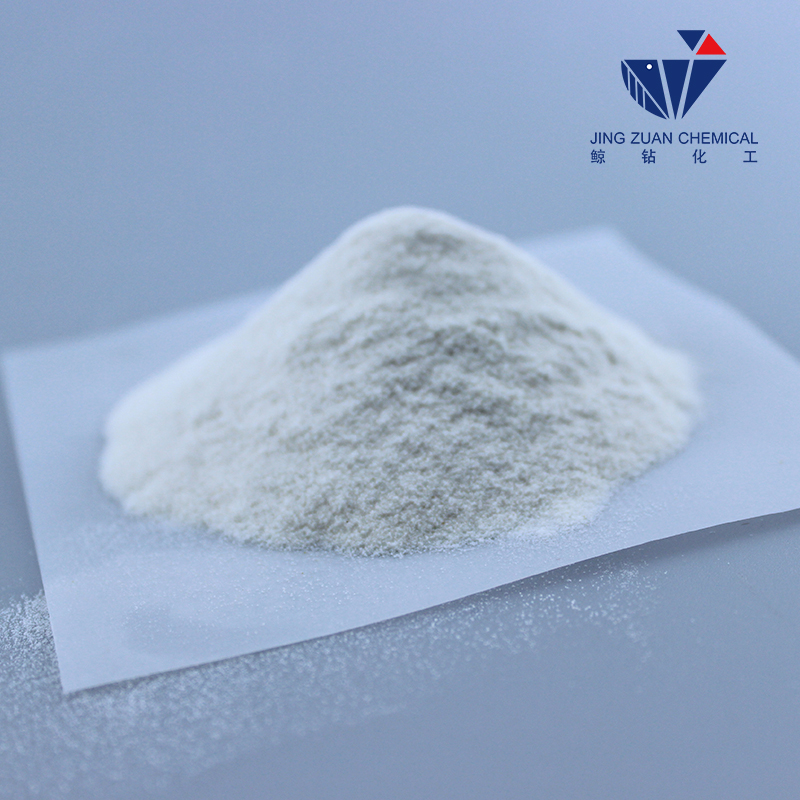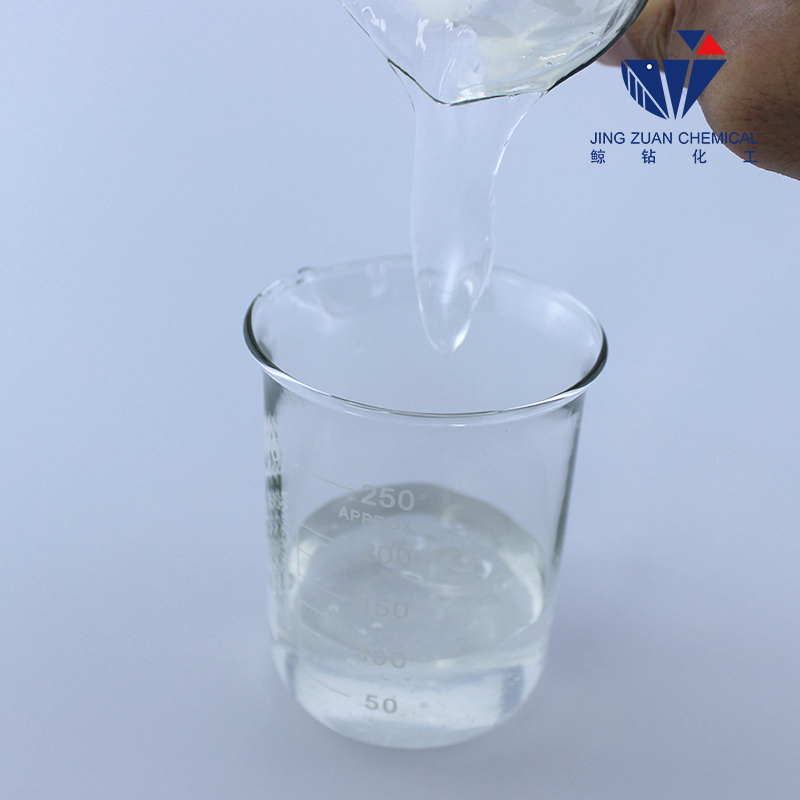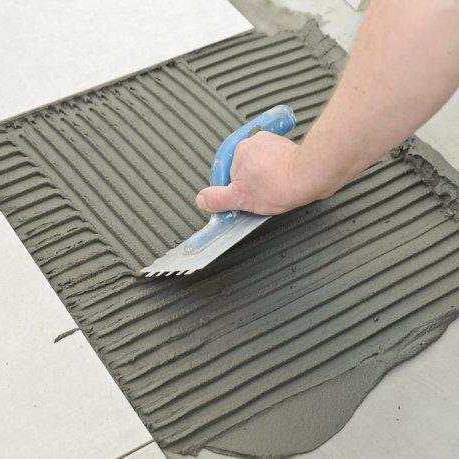
Sep . 23, 2025 12:05 Back to list
Advanced Cellulose Ether: Superior Liquid Thickener Solutions
Understanding Cellulose Ether: A Critical Component in Modern Industrial Formulations
In the diverse landscape of industrial chemistry, cellulose ether stands as a foundational polymer, indispensable across a multitude of applications. Derived from natural cellulose, this versatile family of compounds undergoes chemical modification to achieve enhanced properties such as water solubility, thickening capability, film-forming characteristics, and improved stability. Its unique rheological behavior and excellent water retention make it a cornerstone in industries ranging from construction and paints to pharmaceuticals and personal care. As a premier B2B supplier, our focus is on delivering high-performance HPMC (Hydroxypropyl Methylcellulose) and other cellulose ether derivatives that meet the stringent demands of modern industrial processes, ensuring superior product performance and consistency for our clients.
The chemical modifications involved transform insoluble cellulose into a water-soluble or alkali-soluble polymer with specific functionalities, dictated by the type and degree of substitution. These tailored properties enable precise control over material characteristics, which is crucial for optimizing final product quality and process efficiency. Our commitment to innovation ensures that our range of cellulose ether products consistently delivers on critical performance metrics, empowering our partners to achieve their formulation goals with confidence.
Current Industry Trends and Market Dynamics
The global market for cellulose ether is experiencing robust growth, driven by escalating demand in key sectors such as construction, where it is vital for enhancing the workability and performance of cementitious materials like tile adhesives, renders, and self-leveling compounds. The increasing focus on sustainable building practices and the development of eco-friendly construction materials further fuel this demand, as cellulose ethers contribute to reduced material waste and improved durability. Simultaneously, the burgeoning paint and coatings industry leverages these polymers for their superior thickening and suspension properties, improving application consistency and film formation.
Emerging trends also highlight a shift towards specialized and high-purity grades for pharmaceutical and food applications, where strict regulatory compliance and consistent quality are paramount. The Asia-Pacific region, in particular, is witnessing rapid industrialization and infrastructure development, positioning it as a major growth engine for cellulose ether consumption. Innovation in polymer chemistry is leading to the development of novel derivatives with enhanced functionalities, such as improved enzymatic resistance, higher temperature stability, and optimized rheology modification for specific niche applications. This dynamic market environment necessitates suppliers who can not only provide standard products but also offer customized solutions to meet evolving industrial requirements.

The Manufacturing Process of Cellulose Ether
The production of cellulose ether involves a sophisticated multi-stage chemical synthesis process, starting from highly purified natural cellulose, typically derived from wood pulp or cotton linters. This meticulously controlled process transforms the inert cellulose into a functionally active polymer.
Detailed Process Flow:
- Raw Material Preparation: High-purity cellulose pulp is carefully selected. Key properties like α-cellulose content and polymerization degree are strictly controlled. Our raw materials conform to international standards such as ASTM D1695 for cellulose purity.
- Alkalization: The cellulose is treated with a strong alkali solution, typically sodium hydroxide, to swell the cellulose fibers and convert them into alkali cellulose. This step activates the hydroxyl groups, making them more reactive for subsequent etherification. This process is critical for achieving a uniform reaction and ensuring product consistency.
- Etherification: The alkali cellulose is reacted with specific etherifying agents in a carefully controlled environment. For HPMC, methyl chloride and propylene oxide are used. The reaction introduces methoxy and hydroxypropoxy groups onto the cellulose backbone. This is a critical stage, where reaction temperature, pressure, and time are precisely monitored to achieve the desired degree of substitution (DS) and molar substitution (MS), which directly influence the final product's properties like solubility and gelling temperature. This is analogous to advanced chemical synthesis in the petrochemical industry, ensuring high yield and purity.
- Neutralization: Excess alkali is neutralized using acids like acetic acid or hydrochloric acid, bringing the pH to a desired range.
- Washing: The crude product is subjected to multiple washing cycles with hot demineralized water to remove salt by-products and unreacted reagents, ensuring high purity. This extensive washing, similar to rigorous cleaning processes in the metallurgy sector, is crucial for eliminating impurities and meeting stringent product specifications.
- Drying: The purified wet cake is then dried using fluid-bed dryers, ensuring uniform moisture content. Energy-saving techniques are employed to optimize this phase, reducing environmental impact and operational costs.
- Grinding and Sieving: The dried product is milled to the desired particle size distribution and sieved to ensure consistency. This step is vital for ensuring optimal dissolution rates and dispersibility in various application formulations.
- Packaging: The finished product undergoes final quality control checks, including viscosity, pH, and moisture content, conforming to ISO 9001 quality management standards, before being packaged in moisture-proof bags.
Our stringent quality control throughout the manufacturing process ensures that each batch of HPMC meets or exceeds specified technical parameters. The typical service life of our cellulose ether products, when stored under recommended conditions, is generally two years. Our target industries include petrochemical, metallurgy, water supply & drainage, construction, and pharmaceuticals. In typical application scenarios, such as high-performance concrete admixtures, our products demonstrate advantages in energy saving through improved workability and reduced water usage, and enhanced corrosion resistance in protective coatings.
Technical Specifications and Parameters for HPMC
The performance of cellulose ether, particularly HPMC, is defined by its precise technical specifications. These parameters dictate its suitability for various industrial applications, ensuring optimal functionality in complex formulations. Our HPMC products are rigorously tested to meet industry-leading standards.
| Parameter | Typical Value / Range | Testing Standard |
|---|---|---|
| Appearance | White or off-white powder | Visual Inspection |
| Viscosity (2% solution, 20°C) | 4000-200,000 mPa·s (various grades) | GB/T 28557-2012 (NDJ-1 Rotational Viscometer) |
| Hydroxypropoxy Content | 4.0-12.0% | USP/EP Methods |
| Methoxy Content | 19.0-24.0% | USP/EP Methods |
| Moisture Content | ≤ 5.0% | ASTM D1347-72 |
| Ash Content | ≤ 3.0% | ISO 1521 |
| pH Value (2% solution) | 5.0-8.0 | Electrometric Method |
| Particle Size (80 mesh passing) | ≥ 98% | GB/T 6670-2008 |
These specifications ensure that our HPMC products provide consistent performance characteristics, such as excellent workability in construction mortars, stable thickening in paints, and controlled release in pharmaceutical formulations. The precise control over viscosity and substitution groups allows our clients to achieve optimal rheology modification, water retention, and adhesion.

Diverse Application Scenarios and Technical Advantages
The versatility of cellulose ether makes it an invaluable additive across a broad spectrum of industrial applications. Its unique polymeric structure enables it to perform multiple functions, from acting as a highly effective liquid thickener to providing excellent water retention and film-forming capabilities.
Key Application Areas:
- Construction Industry: Essential in dry-mix mortars, renders, tile adhesives, gypsum products, and self-leveling compounds. It improves workability, increases open time, enhances bond strength, and prevents sagging. For instance, in exterior insulation and finish systems (EIFS), HPMC improves adhesion and crack resistance, extending the service life of the facade.
- Paints and Coatings: Functions as a highly efficient liquid thickener, rheology modifier, and stabilizer. It improves brushability, prevents pigment settling, and enhances film formation, resulting in a smoother, more uniform finish. Specialized grades like hec cellulose are particularly favored for latex paints due to their excellent compatibility and non-ionic nature.
- Pharmaceuticals: Used as a binder, disintegrant, and controlled-release agent in tablets, and as a thickener and suspending agent in liquid formulations. Its non-toxic and inert properties make it ideal for pharmaceutical-grade applications.
- Personal Care Products: Found in shampoos, lotions, and toothpastes as a rheology modifier and stabilizer, improving texture, feel, and shelf-life.
- Food Industry: Acts as a thickener, emulsifier, and stabilizer in various food products, enhancing texture and extending shelf life.
Technical Advantages:
- Superior Water Retention: Significantly reduces water loss in cementitious materials, preventing premature drying and improving hydration efficiency, leading to higher mechanical strengths.
- Rheology Modification: Provides precise control over viscosity and flow properties, crucial for sprayable coatings, pumpable mortars, and stable suspensions.
- Adhesion Enhancement: Improves the bond strength between different materials, critical for tile adhesives and renders.
- Anti-Sagging Properties: Prevents vertical flow or slumping in thick-layer applications like wall plasters and high-build coatings.
- Film Formation: Creates strong, flexible films that enhance durability and protective qualities in paints and coatings.
- Suspension Stability: Effectively suspends solid particles, preventing sedimentation in liquids like paints and pharmaceutical suspensions.

Vendor Comparison: Choosing the Right Cellulose Ether Partner
Selecting the optimal supplier for cellulose ether is a strategic decision that significantly impacts product quality, operational efficiency, and cost-effectiveness. A thorough evaluation of potential partners involves more than just price; it requires assessing their technical capabilities, quality assurance protocols, supply chain reliability, and ability to provide tailored solutions.
| Feature/Criterion | Our Offering (CNJZ Chemical) | Generic Competitor |
|---|---|---|
| Product Quality & Consistency | Strict ISO 9001:2015 certified production. Batch-to-batch consistency guaranteed via advanced QC. | Variable, often lacking comprehensive certification or inconsistent quality control. |
| Customized Solutions & R&D | Dedicated R&D team capable of developing bespoke cellulose ether grades for specific client needs. | Limited or no customization options, standard product range only. |
| Technical Support & Expertise | Expert technical support with deep industry knowledge for formulation optimization and troubleshooting. | Basic or insufficient technical guidance. |
| Supply Chain Reliability | Robust global logistics network, reliable lead times, and redundant supply options. | Potential for delays, limited inventory, and inconsistent delivery. |
| Certifications & Compliance | ISO 9001, REACH compliant, and specific product certifications (e.g., Kosher/Halal for certain grades). | May lack international certifications or compliance adherence. |
| Price vs. Performance | Competitive pricing with superior performance, leading to better total cost of ownership. | Lower initial price often correlates with lower performance and higher application costs. |
Our extensive experience and commitment to quality ensure that we provide a superior value proposition, positioning us as a trusted partner for your polymer requirements. We partner with industry leaders globally, reflecting our authoritative standing and consistent delivery of high-quality solutions.
Customized Solutions and Application Case Studies
Recognizing that standard products may not always meet the unique challenges of specialized applications, we offer bespoke cellulose ether solutions. Our dedicated R&D team collaborates closely with clients to understand their precise performance criteria, developing tailored formulations that deliver optimal results. This capability to innovate and adapt is a cornerstone of our service philosophy, ensuring our partners gain a competitive edge.
Case Study 1: High-Performance Tile Adhesive for Challenging Substrates
A leading construction material manufacturer faced issues with insufficient bond strength and excessive open time in their standard tile adhesive when applied to low-porosity substrates like large-format porcelain tiles. Our technical team analyzed their formulation and recommended a customized HPMC grade with optimized molecular weight distribution and higher degree of substitution for enhanced water retention and improved rheology.
- Solution: Custom-designed HPMC with controlled gelling temperature.
- Result: Achieved a 25% increase in tensile adhesion strength (EN 1348 standard) on dense substrates. Open time was extended by 15 minutes without compromising early strength development. This significantly reduced installer fatigue and material waste, leading to substantial cost savings and improved project timelines for the client.
Case Study 2: Developing a Stable Liquid Thickener for Waterborne Coatings
A paint and coatings producer required a more efficient and stable liquid thickener for their high-solids waterborne architectural paints. Their existing hec cellulose solution exhibited shear-thinning issues and poor storage stability at elevated temperatures.
- Solution: A specially modified HEC variant with enhanced pseudoplasticity and improved bacterial resistance.
- Result: The new formulation demonstrated a 30% improvement in sag resistance and a 50% reduction in viscosity loss after 30 days at 50°C. This led to a more consistent product, fewer customer complaints, and extended shelf life, reinforcing the client's brand reputation.

Trustworthiness and Support: FAQs, Lead Time, Warranty & Customer Service
Frequently Asked Questions (FAQs)
Q1: What is the typical shelf life of your HPMC products?
A1: Under recommended storage conditions (dry, cool environment, away from direct sunlight), our HPMC products maintain their specifications for two years from the date of manufacture. Proper sealing after opening is crucial.
Q2: Can your HPMC be used in food-grade applications?
A2: Yes, we offer specific food-grade HPMC variants that comply with relevant international food safety standards, such as FDA and European regulations. Please specify your application requirements for appropriate product selection.
Q3: How do I select the correct viscosity grade for my application?
A3: Selecting the optimal viscosity depends heavily on the specific application and desired rheological properties. Our technical support team can provide detailed guidance, including dosage recommendations and formulation assistance, based on your project needs.
Lead Time and Fulfillment
We maintain efficient production schedules and robust inventory management to ensure timely delivery. Standard orders for our HPMC products typically have a lead time of 7-14 business days, depending on order volume and destination. For customized solutions or large-scale projects, specific lead times will be communicated and agreed upon during the consultation phase, ensuring full transparency. Our logistics team works diligently to optimize shipping routes and minimize transit times, reflecting our commitment to reliable service.
Warranty Commitments
All our products are manufactured under strict quality control protocols and are warranted to meet the published specifications at the time of delivery. We stand by the quality and performance of our HPMC products. Should any product fail to meet these specifications, we commit to prompt investigation and appropriate corrective action, including replacement or credit, in accordance with our terms and conditions. This commitment underpins our dedication to customer satisfaction and product reliability.
Dedicated Customer Support
Our B2B clients benefit from comprehensive customer support, including pre-sales consultation, technical assistance during product integration, and responsive after-sales service. Our team of experienced technical specialists and sales representatives is available to assist with product selection, formulation optimization, troubleshooting, and logistical inquiries. We pride ourselves on building long-term partnerships through consistent communication and proactive support, ensuring your operations run smoothly and efficiently.
Conclusion
As a cornerstone of modern industrial formulations, cellulose ether continues to drive innovation and performance across diverse sectors. Our commitment to manufacturing excellence, coupled with our expertise in delivering tailored HPMC solutions, positions us as an ideal partner for businesses seeking to enhance their product offerings. From superior water retention and rheology modification to robust technical support and customized development, we are dedicated to empowering our clients with high-quality, reliable, and performance-driven cellulose ether products. Partner with us to unlock the full potential of your formulations and achieve unparalleled success in your market.
References
- Klemm, D., Philipp, B., Heinze, T., Wagenknecht, U., & Nehls, W. (2005). Comprehensive Cellulose Chemistry: Fundamentals and Applications. Wiley-VCH.
- Sjöblom, J. (2001). Cellulose Derivatives. In Emulsions and Emulsion Stability (pp. 577-622). CRC Press.
- U.S. Food and Drug Administration. (2023). CFR - Code of Federal Regulations Title 21. Retrieved from https://www.accessdata.fda.gov/scripts/cdrh/cfdocs/cfcfr/cfrsearch.cfm
- International Organization for Standardization. (2023). ISO 9001: Quality management systems – Requirements. Retrieved from https://www.iso.org/iso-9001-quality-management.html
-
Cellulose Ether | High Purity, Fast Hydration, Stable Flow
NewsNov.17,2025
-
Cellosize HEC Thickener – High Purity, Fast-Dissolving
NewsNov.17,2025
-
Cellulose Ether: High-Purity Liquid Thickener, HEC Cellulose
NewsNov.17,2025
-
VAE Powder (RDP): High Adhesion & Flexibility for Mortars
NewsNov.17,2025
-
Cellulose Ether: High Purity, Fast-Dissolving, Stable Flow
NewsNov.17,2025
-
Cellosize HEC Thickener – High Purity, Fast-Dissolving
NewsNov.11,2025







